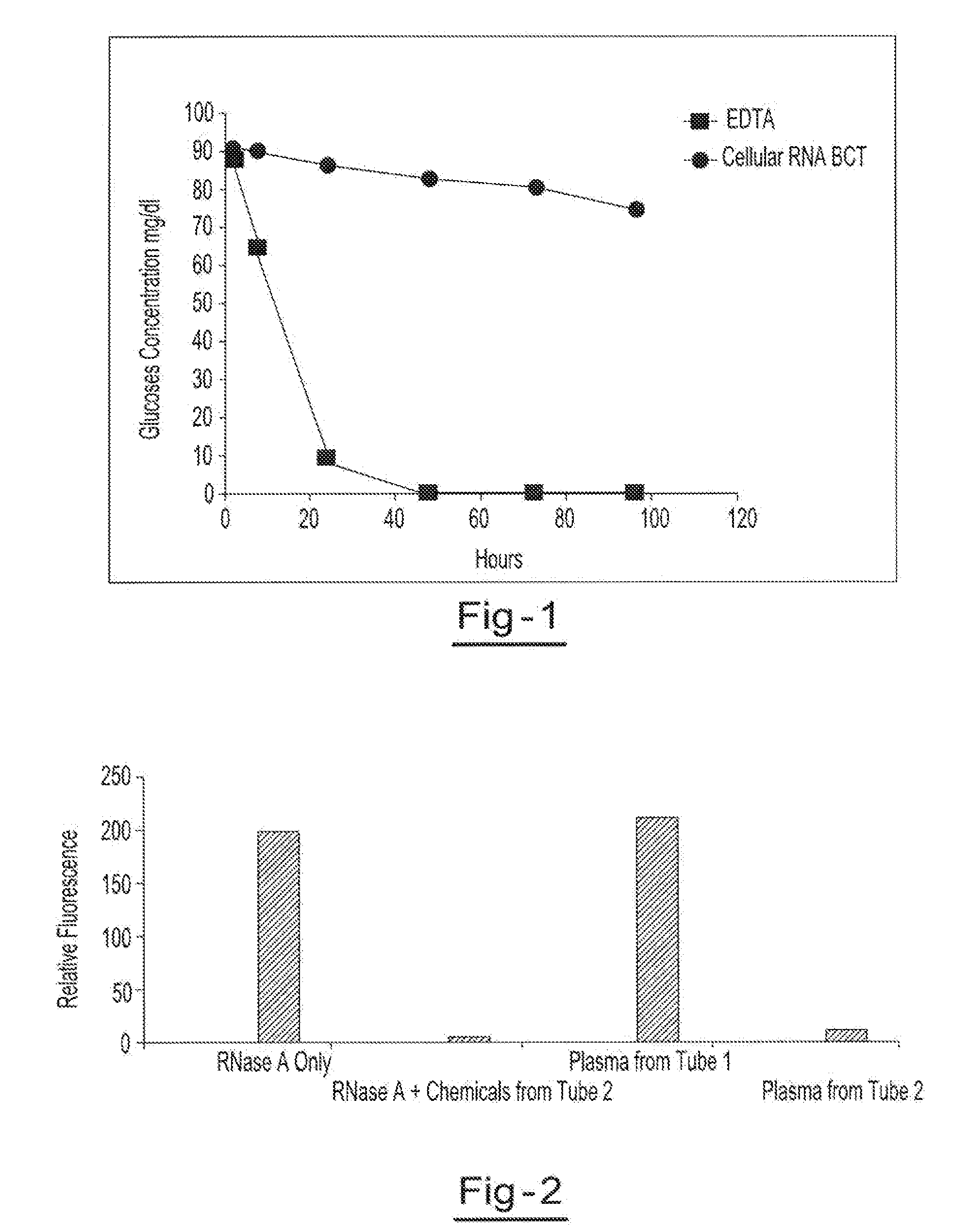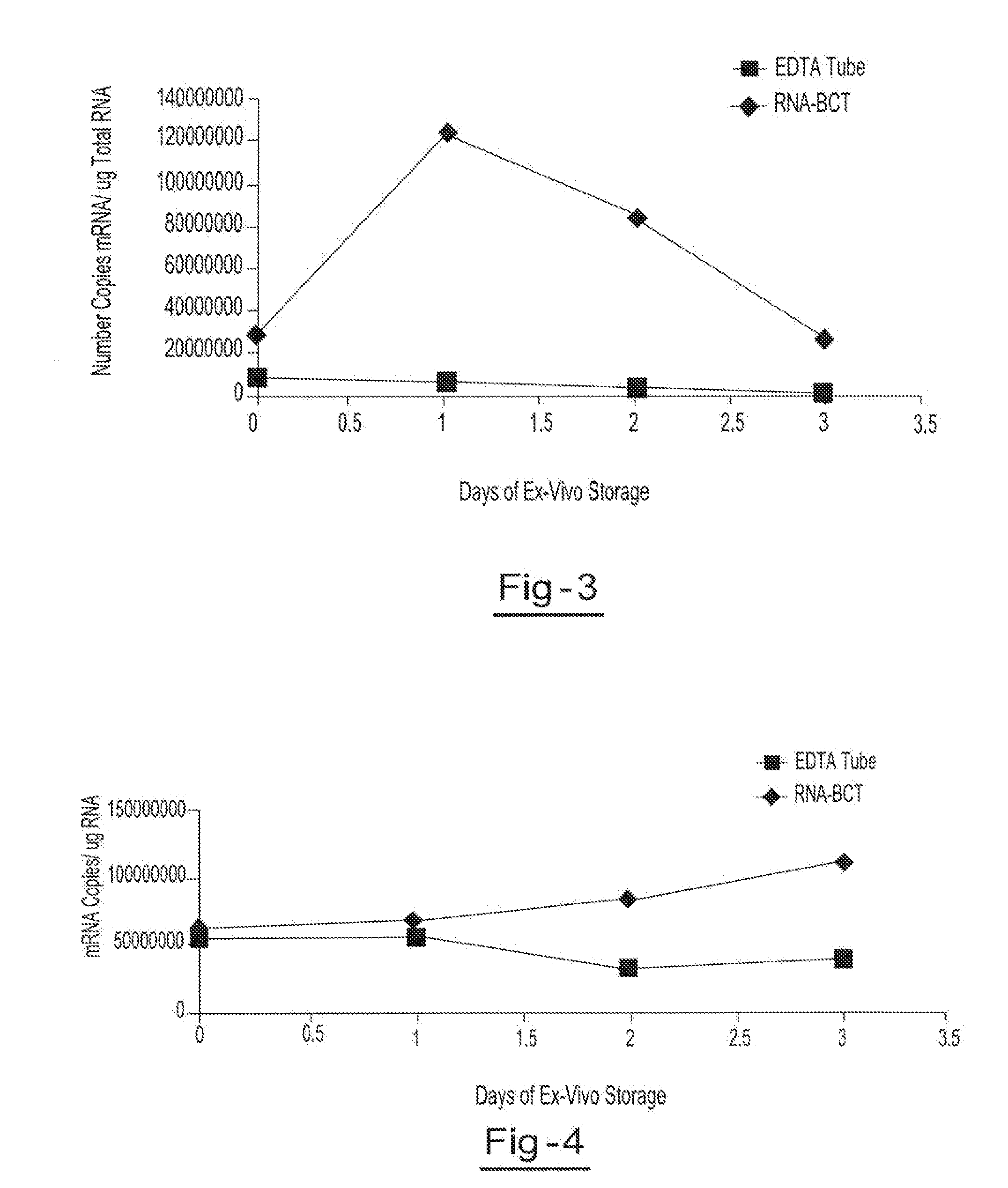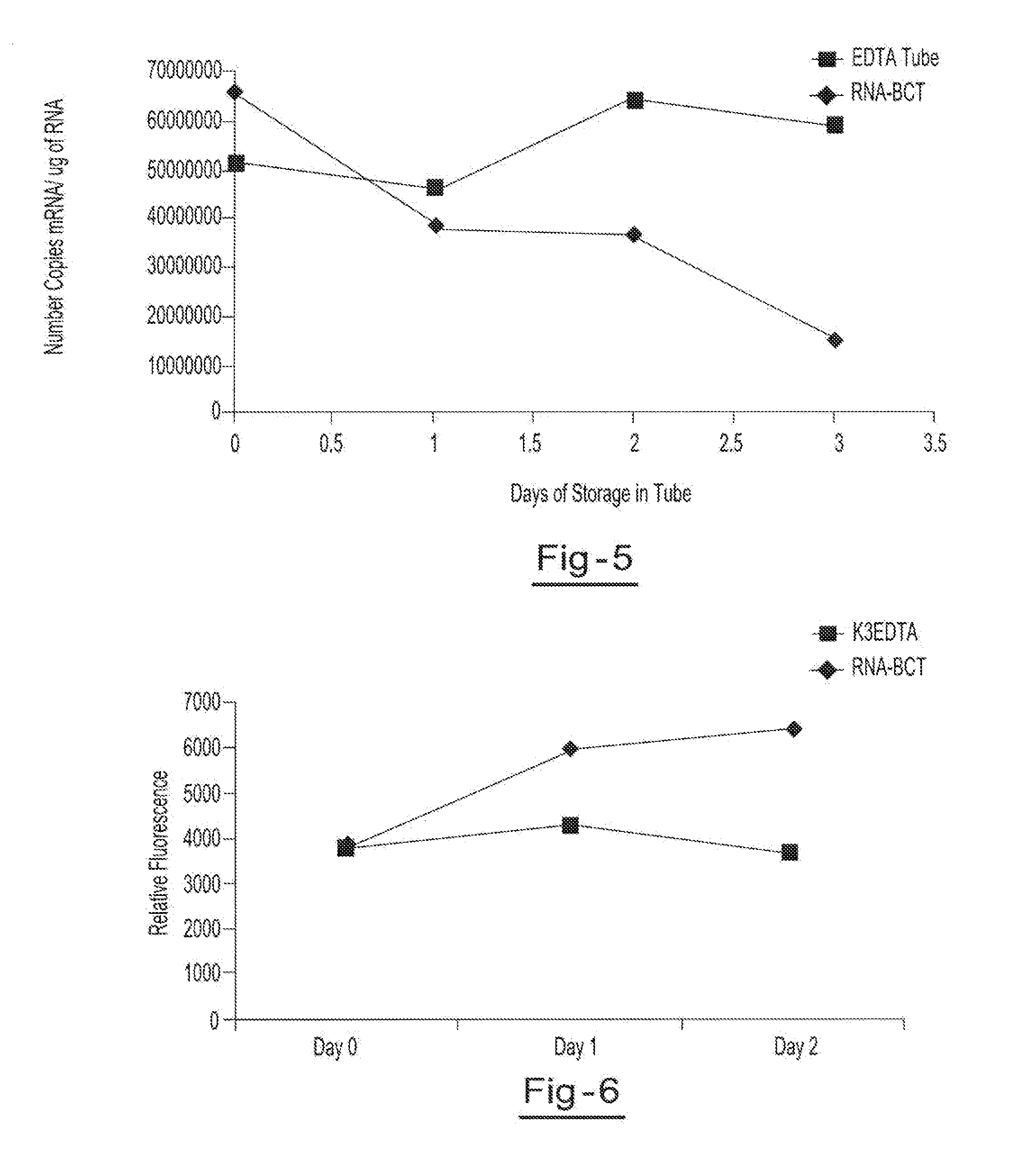Stabilization of RNA in intact cells within a blood sample
- Summary
- Abstract
- Description
- Claims
- Application Information
AI Technical Summary
Benefits of technology
Problems solved by technology
Method used
Image
Examples
example 1
[0052]Blood samples from the same donor are drawn into two separate blood collection tubes (tube 1 (EDTA tube) and tube 2 (RNA BCT tube)). Tube 1 contains only EDTA. Tube 2 contains DU, EDTA, ATA, glyceraldehyde and sodium fluoride. Both tubes are stored at room temperature and 1 ml aliquots of blood are removed from each tube at hours 1.5, 8, 24, 48, 72 and 96. The blood glucose levels of each sample are measured using a YSI blood glucose meter available from YSI Life Sciences (Yellow Springs, Ohio). The blood glucose concentration of samples from tube 2 were the only samples that maintained relatively consistent glucose levels over the test period, indicating that the combination of EDTA, DU, ATA, glyceraldehyde and sodium fluoride provided reduced levels of cell metabolism. The results of this example are shown in a graphic format at FIG. 1.
example 2
[0053]Blood samples from the same donor are drawn into two separate blood collection tubes (tube 1 and tube 2). Tube 1 contains EDTA. Tube 2 contains DU, EDTA, ATA, glyceraldehyde and sodium fluoride. Both tubes are stored for 2 h at room temperature before plasma was separated. RNase activity of plasma from tube 1 and tube 2 was measured using a commercially available RNase activity detection kit, RNaseAlert® Lab Test Kit (Applied Biosystems, Foster City, Calif.). Two additional control experiments were also carried out with purified RNase A enzyme alone and RNase A treated with chemical mixture present in tube 2. RNase activity is presented as relative fluorescence. Results of this example are illustrated in a graphic format at FIG. 2.
example 3
[0054]Two blood samples from the same donor are drawn into two separate blood collection tubes, tube A (RNA BCT) and tube B (EDTA). Tube A contains DU, EDTA, ATA, glyceraldehyde and sodium fluoride. Tube B contains only EDTA. Both tubes are stored at room temperature and 5 ml aliquots of blood are removed from each tube on day 0, day 1, day 2, and day 3 and plasma is separated. All samples are centrifuged at 800 g for 10 minutes at room temperature to separate the plasma. The plasma is then transferred into new tubes and centrifuged at 1500 g for 10 minutes at room temperature. Free circulating RNA is purified using the QIAamp circulating nucleic acid kit available from Qiagen Inc. (Valencia, Calif.). RNA is extracted from each plasma sample. The samples are then amplified by Real Time PCR (using TaqMan® RT PCR reagents available from Applied Biosystems, Foster City, Calif.) to identify the c-fos mRNA copy number per ml of plasma. Results showed a consistent copy number of c-fos mRN...
PUM
| Property | Measurement | Unit |
|---|---|---|
| Temperature | aaaaa | aaaaa |
| Temperature | aaaaa | aaaaa |
| Time | aaaaa | aaaaa |
Abstract
Description
Claims
Application Information
 Login to View More
Login to View More - R&D
- Intellectual Property
- Life Sciences
- Materials
- Tech Scout
- Unparalleled Data Quality
- Higher Quality Content
- 60% Fewer Hallucinations
Browse by: Latest US Patents, China's latest patents, Technical Efficacy Thesaurus, Application Domain, Technology Topic, Popular Technical Reports.
© 2025 PatSnap. All rights reserved.Legal|Privacy policy|Modern Slavery Act Transparency Statement|Sitemap|About US| Contact US: help@patsnap.com



